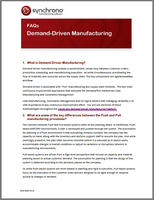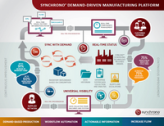Manufacturing Metrics that Actually Matter (The Ones We Rely On)
Part one of a multi-part series to help you measure your production efforts wisely LNS Research blogger Mark Davidson said, “When it comes to metrics, it’s often said that what gets measured gets done.” I have found this to be true when working with many different manufacturers. Mark also writes: “Metrics that have the attention of business and manufacturing leaders tend to be those that get measured and improved upon





















